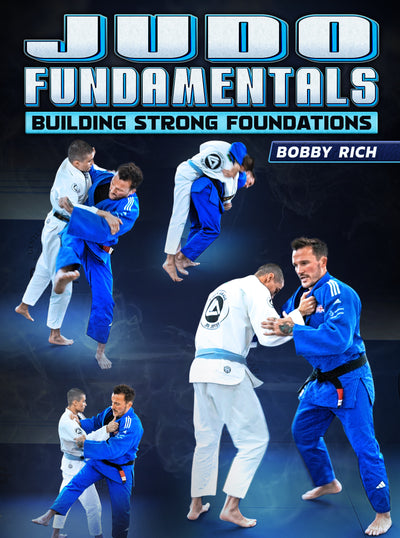Expand Your Judo Game By Bridging Stand Up With the Ground
Making the transition from the feet to the ground can be a difficult one for the new Judoka. Knowing what to do once the opponent is either thrown or pulled down doesn't come easy. Having a plan for this contingency is important and being comfortable with either the standing and the ground game can help open up opportunities to expand your judo game.
Olympic Silver Medalist Travis Stevens recently addressed a question from someone on the internet who asked what was the best way to transition from the standing position to the ground. Check out his response in the video below and we'll break it down afterwards.
As Travis Stevens states in the video, this particular shimewaza is not something he's made a lot of use of in competition, but in the dojo and at the International Pin event, he was able to use it quite a bit. The key benefit of this technique is that it begins to build the pathway between standing and ground and once that transition becomes more and more comfortable and seamless for you, the more transitions you will begin to employ in your own game.
Let's review the steps of the technique:
Initially, Travis' opponent takes a left stance. Travis will use his right hand to pin the opponent's left sleeve to their abdomen area and secure a collar grip with his his left hand.
Travis takes a back step turning to the side and pulling the opponent down by the collar. He then kicks on the lead lead of the opponent forcing him down towards the ground even lower until he goes to his knees. The hand that is holding the collar will then loop the lapel under the chin and with his right hand Travis will secure the belt of the opponent.
The final constriction of the shimewaza takes place when Travis brings his left knee against the head pressing tightly as he pulls up on his collar grip securing the choke. In the event that the opponent turns away and attempts to "roll out of the choke" Travis will abandon the choke and secure cross body control of the opponent and secure kesagatame.
Though strictly not a throw per se, the opponent is pulled down to the ground in a controlled manner that allows the collar grip to be smoothly secured under the chin. The shimewaza is relatively easy to finish and in the event the opponent defends and attempts to escape by rolling out, they still put themselves in a position to be controlled and pinned by the kesagatame.
Take some time and add this two part technique to your game in order to begin opening your mind to the transition from standing to groundwork. Once you've have found some success with this easy technique--begin to look for more opportunities to chain easy transitions between standing and the ground game.
For more techniques that focus on the ground, check out Travis Stevens' NEWAZA MASTERY. In this 8 part Master Class on the art of ground fighting in Judo, Olympian Travis Stevens covers all aspects of how to score and finish on the ground. He has an entire section focused purely on shimewaza like the one he showed above--so if you liked that choke, then this is the instructional for you! You can get your copy here or at the BUY NOW link below.




